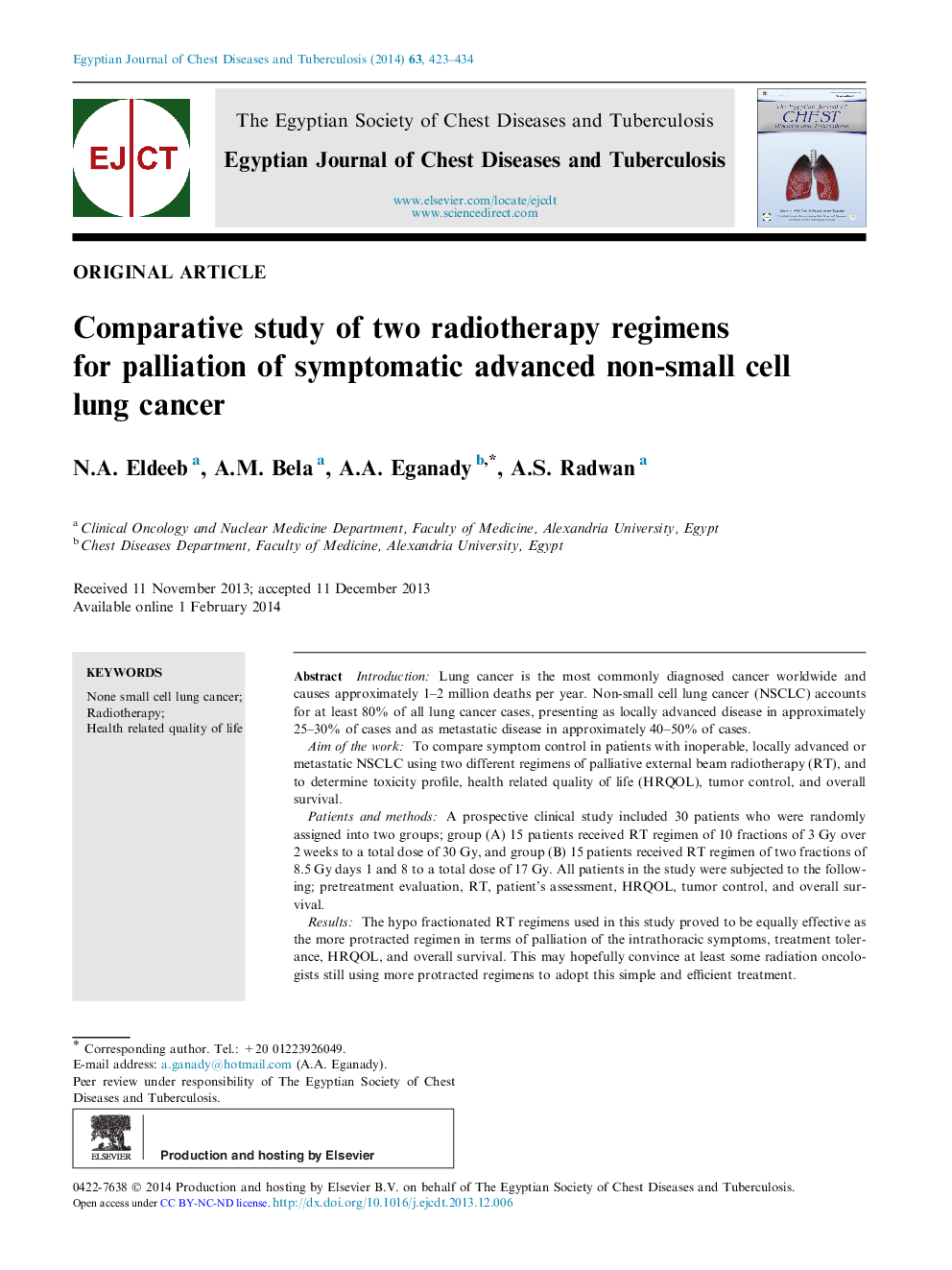| Article ID | Journal | Published Year | Pages | File Type |
|---|---|---|---|---|
| 3400356 | Egyptian Journal of Chest Diseases and Tuberculosis | 2014 | 12 Pages |
IntroductionLung cancer is the most commonly diagnosed cancer worldwide and causes approximately 1–2 million deaths per year. Non-small cell lung cancer (NSCLC) accounts for at least 80% of all lung cancer cases, presenting as locally advanced disease in approximately 25–30% of cases and as metastatic disease in approximately 40–50% of cases.Aim of the workTo compare symptom control in patients with inoperable, locally advanced or metastatic NSCLC using two different regimens of palliative external beam radiotherapy (RT), and to determine toxicity profile, health related quality of life (HRQOL), tumor control, and overall survival.Patients and methodsA prospective clinical study included 30 patients who were randomly assigned into two groups; group (A) 15 patients received RT regimen of 10 fractions of 3 Gy over 2 weeks to a total dose of 30 Gy, and group (B) 15 patients received RT regimen of two fractions of 8.5 Gy days 1 and 8 to a total dose of 17 Gy. All patients in the study were subjected to the following; pretreatment evaluation, RT, patient’s assessment, HRQOL, tumor control, and overall survival.ResultsThe hypo fractionated RT regimens used in this study proved to be equally effective as the more protracted regimen in terms of palliation of the intrathoracic symptoms, treatment tolerance, HRQOL, and overall survival. This may hopefully convince at least some radiation oncologists still using more protracted regimens to adopt this simple and efficient treatment.ConclusionPalliative RT plays an important role of palliation of symptomatic intra thoracic disease and in preservation of HRQOL in patients who have limited expected survival time and or intolerance to combined chemotherapy and radical RT regimens.
